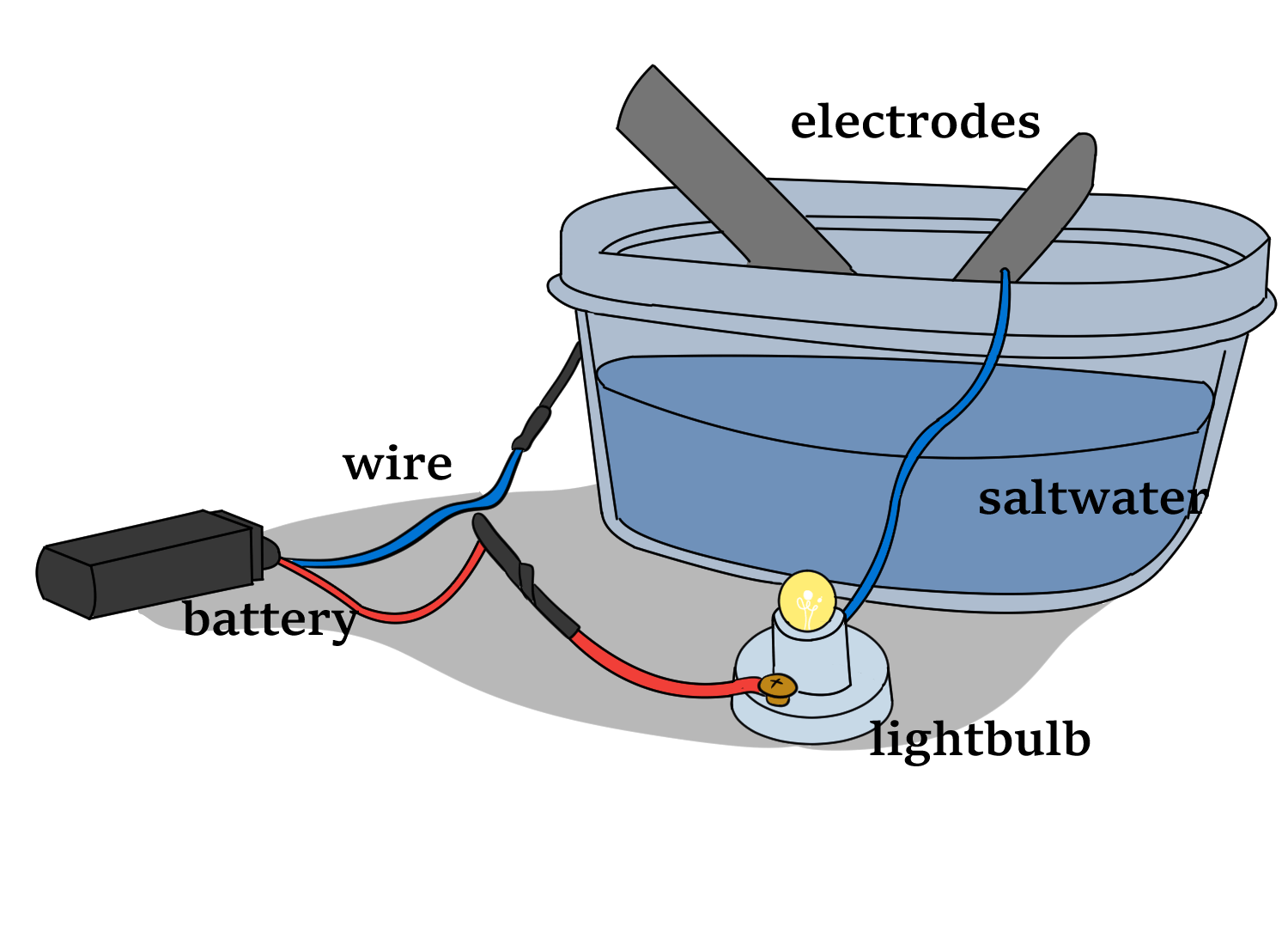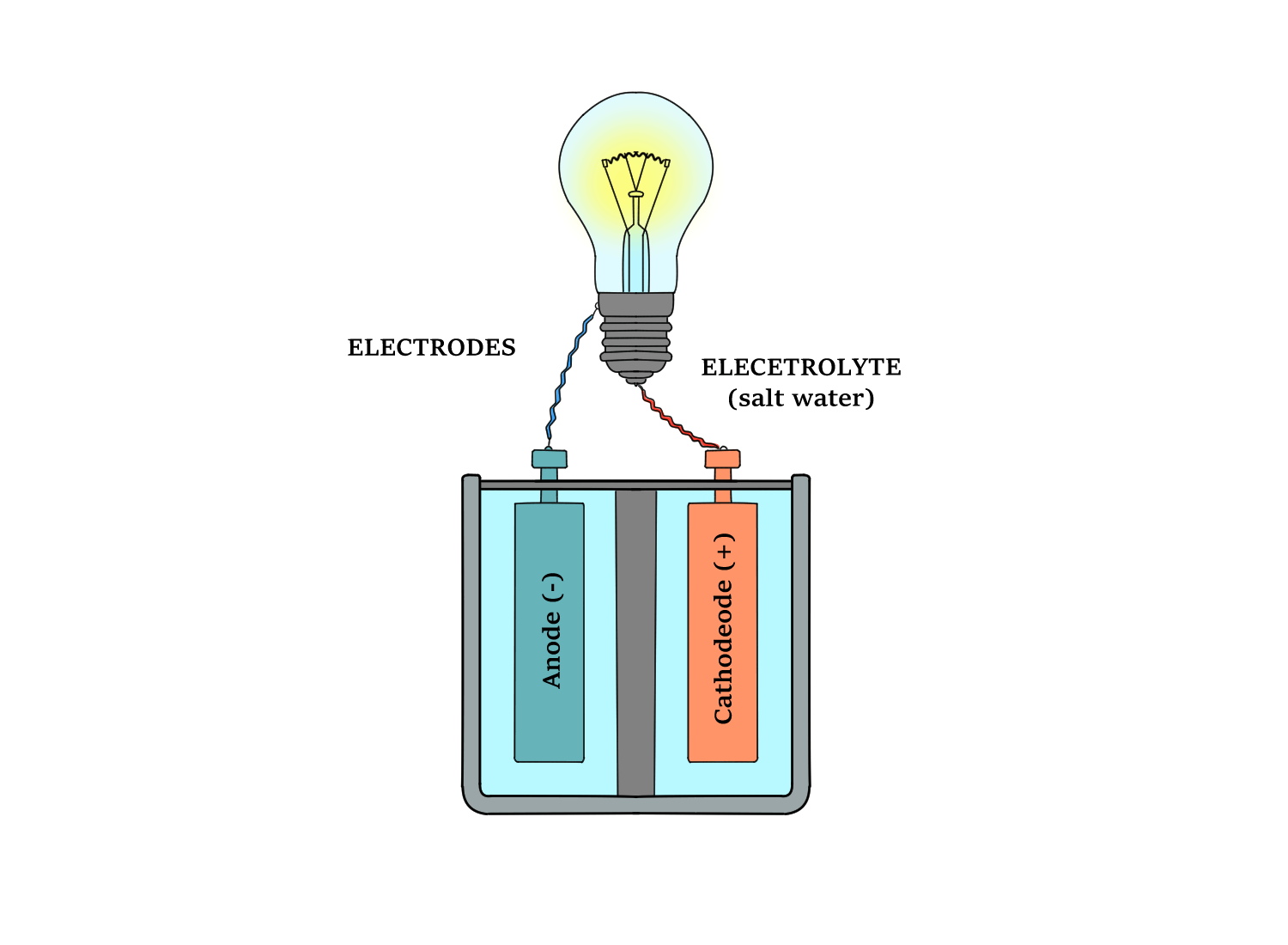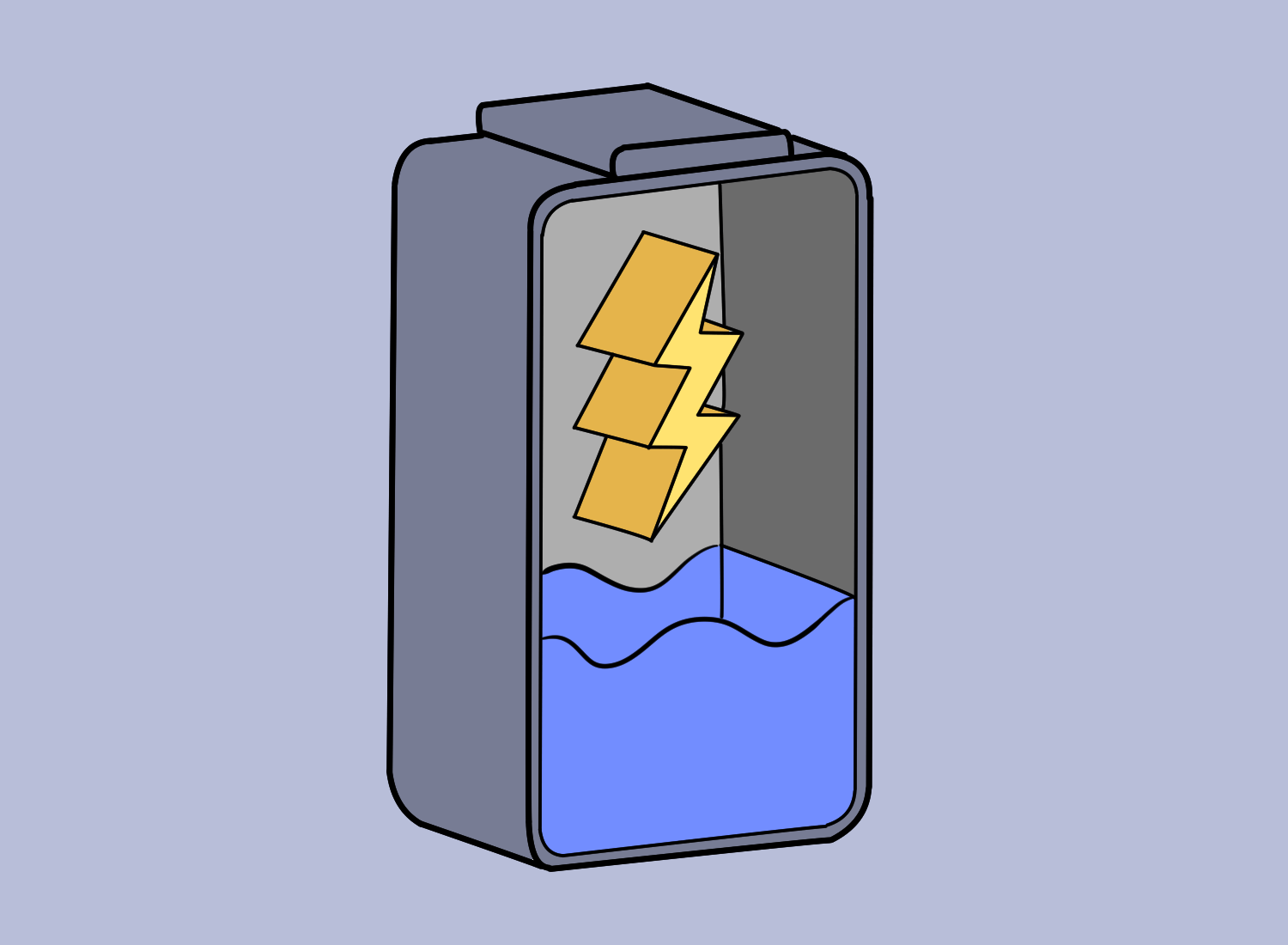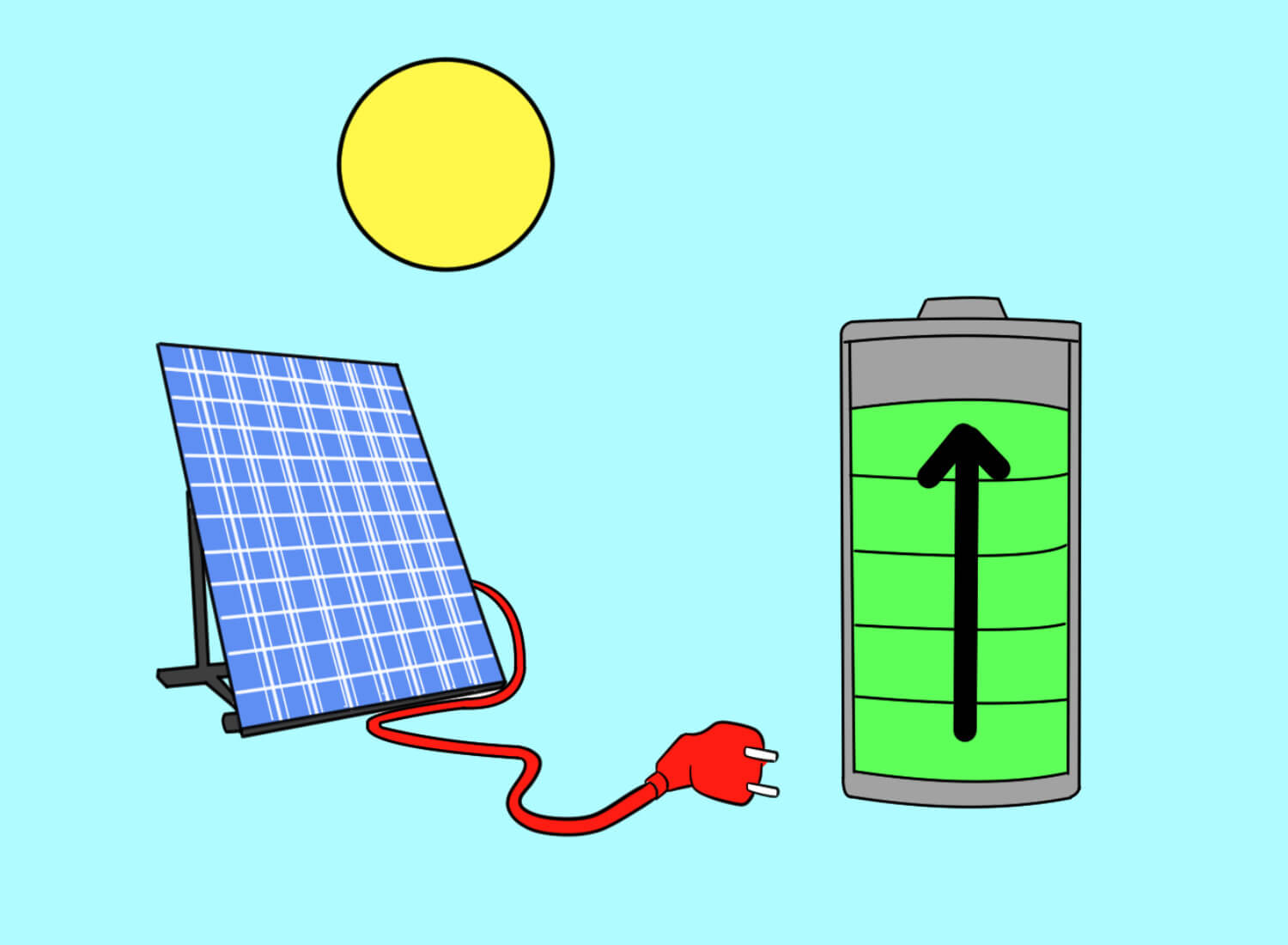Home Solar Battery Storage Salt Water Battery: Everything You Need To Know
Salt Water Battery: Everything You Need To Know
Heading down the road to green energy, saltwater batteries pop up as a top-notch and planet-friendly pick. With saltwater electrolytes at their core, these clever bits of kit stash away power and give it back when needed.
Saltwater batteries use concentrated saltwater or saline to capture and store electricity that can be discharged later to power electrical gadgets. Unlike lithium-ion batteries that use lithium to conduct electricity, saltwater batteries use sodium ions.1
These batteries have gained attention for their potential environmental benefits, safety features, and suitability for certain applications. Here’s everything you need to know about saltwater batteries.

Table of Contents
ToggleUnderstanding saltwater battery technology
Saltwater batteries offer a fresh and sustainable alternative to traditional lithium-ion batteries. They function just like most lithium-ion batteries, consisting of an anode and a cathode that serve as the positive and negative terminals.
But here’s the twist: instead of relying on the element lithium for conducting electricity, saltwater batteries use sodium, the primary ingredient in table salt. Mind-blowing, right?
How saltwater batteries work

The secret behind the operation of saltwater batteries lies in the exchange of ions between the anode and the cathode through a saltwater electrolyte. This process allows saltwater batteries to store electricity and eventually discharge energy when needed.
But what sets saltwater batteries apart is their safety and sustainability. Unlike other battery technologies that use hazardous electrolytes, saltwater batteries utilise a safer electrolyte solution: saltwater.
Moreover, while lithium-ion batteries hold higher charges within their energy cells, saltwater batteries store electricity in a more eco-friendly way.
So, while they may have a lower energy density, they excel in terms of safety and sustainability.
Key components of a saltwater battery
The key battery components of a saltwater battery are the anode, cathode, and the saltwater electrolyte. These components work together in harmony to store and release energy.
The saltwater battery is unique in its aqueous hybrid ion chemistry. Its core is manufactured with an electrolyte that uses saltwater. Its anode and cathode are made of carbon titanium phosphate and manganese oxide respectively.
These components are separated by a synthetic cotton separator, which further enhances the battery’s safety.
Unlike other batteries, saltwater batteries do not contain toxic metals, making them a more eco-friendly choice. In fact, even used battery components from saltwater batteries pose less of an environmental risk compared to traditional options.
How much do saltwater batteries cost?
Saltwater batteries, such as the Aquion Aspen 48S, a 2.2 kWh battery stack, cost about $2,200. So, an 11 kWh Aquion battery storage system would cost about $11,000.
Saltwater batteries use the Aqueous Hybrid Ion (AHI) technology, which makes them safe. They are non-flammable and non-explosive, and the fact that they are engineered using non-toxic materials makes them an excellent choice for homes. These batteries also require minimal to zero maintenance.
Saltwater vs. lithium-ion: comparing saltwater batteries to other energy storage options
Saltwater batteries stack up against other energy storage options quite impressively! They offer an exciting alternative to most storage solar power storage options, particularly lithium-ion batteries.
| Saltwater batteries | Lithium-ion batteries | |
|---|---|---|
| Technology/chemistry used | Aqueous Hybrid Ion (AHI) technology | Lithium metal |
| Average cost per battery | $2,200 per 2.2 kWh stack | $5,000 - $15,000 |
| Average weight | 118 Kg | 13 Kg |
| Usable Depth of Discharge | 100% | 80 - 100% |
| Lifespan (daily cycles) | 3,000 | 2,000 to 6,000 |
| Warranty | 10+ years | 8 years (5 years full + 3 years prorated) |
Performance and efficiency
When it comes to performance and efficiency, saltwater batteries really shine. They boast a remarkable cycle efficiency of 90%2, making them a top choice for energy storage. Plus, they’re non-toxic, non-flammable, and cost-effective.
In comparison to other battery technologies, saltwater batteries have a higher cycle efficiency.
So, while they may have a lower energy density, requiring more space for the same amount of energy storage, their superior performance and efficiency make them a compelling choice for many applications. They also have a longer lifespan and require less maintenance than other energy storage options
Environmental impact
Advantages of saltwater batteries
Saltwater batteries have many advantages, including their safety, sustainability, long lifespan, and ease of maintenance. Let’s have a close look at these advantages.
Safety

When it comes to safety and sustainability, saltwater batteries are truly in a league of their own. They’re non-toxic and non-flammable, making them incredibly safe compared to other battery technologies.
They don’t contain the same toxic metals or materials, making them much safer to handle and use. And because they don’t pose a fire risk, they’re safe to use in a variety of applications, including homes and commercial or industrial settings.
Eco-friendly

The components of saltwater batteries are eco-friendly and easy to recycle, reducing their environmental impact. Since saltwater batteries use materials that can be easily found (sodium and water), no large-scale extractions are needed that might lead to ecological damage.
Long lifecycle and durability
Saltwater batteries have an incredibly long lifecycle thanks to their robust design and high-quality components. They can last up to 5,000 cycles4 and be used beyond their indicated cycles without any risk.
This means they can provide reliable energy storage for longer periods, reducing the need for frequent replacements. Plus, they’re remarkably durable, capable of withstanding harsh environmental conditions without compromising their performance.
Maintenance-free

Saltwater batteries can allow a full discharge without damaging the battery or affecting its life cycle. In addition, the battery can run for several days or weeks5 without charge. This makes saltwater batteries extremely easy to maintain.
Disadvantages of saltwater batteries
Like all technologies, saltwater batteries have their limitations. Saltwater batteries, compared to lithium-ion batteries, exhibit a reduced energy density2, implying they can store less energy within a given volume. This poses a challenge as lower energy density necessitates larger physical batteries. Consequently, larger batteries require increased material usage and incur higher production costs.
Salt batteries need to be kept at high temperatures because the cell need to be heated to around 250 degrees to function6. The sodium chloride in the battery must be molten to work, and many salts melt at extremely high temperatures of 200 to 300 degrees. The battery operates at high temperatures when the electrolyte is molten, and at low temperatures when it is idle.
But these challenges are not obstacles, rather they are exciting opportunities for innovation and improvement.
Lower energy density

One of the major downsides of saltwater batteries is their lower energy density. This means that they require more space to store the same amount of energy compared to other battery technologies.
While this may limit their applications to low-power devices and short-term energy storage, it opens up avenues for research and development to improve their energy density.
Manufacturing costs and commercialization challenges
The manufacturing costs of saltwater batteries are another area of concern. Due to the need for specialized materials and processes, saltwater batteries can be more expensive to manufacture7, making them costlier than most other batteries.
Additionally, commercializing saltwater battery technology presents its own set of challenges. Currently, Aquion Energy is the only known company manufacturing these batteries, but they ran into some non-technological issues that stopped production.
However, this is a hurdle that can be overcome with the right investment and innovation, making the future of saltwater batteries all the more exciting.
Limited C-rate
A battery’s C-rate8 is the capacity or amount of current it can charge and discharge later. For example, a 1 C rating means the battery will charge or discharge in 60 minutes, while a 0.5 C rating means it will take 120 minutes. A battery’s capacity is usually rated at 01 C, meaning that a fully charged battery with a 01 Ah capacity should provide 01 A for one hour.The higher the C-rate, the better the battery’s electronic reserve, which means it can run at a higher charge.
Saltwater batteries come with a 0.5 C-rate,9 which means they can only discharge half (50%) of their capacity for a single charge. Therefore, these batteries may not be the best option if you need a higher electricity supply for a short period of time.
Applications of saltwater batteries
Saltwater batteries are not just exciting in theory; they have practical applications that make them even more appealing.
From powering low-power devices to providing energy storage for renewable sources, saltwater batteries are making their mark in various fields.
Here are some of the applications of saltwater batteries:
Solar energy storage

When paired with solar panels, saltwater batteries can store the excess energy generated10 during the day for use at night or during periods of low sunlight. This not only ensures a constant supply of power, but also improves the efficiency of the solar power system.
Plus, saltwater batteries are safer, more resilient, have a longer life cycle, and can be more deeply discharged without damage compared to other types of batteries. This makes them an excellent choice for solar energy storage.
Grid-scale energy storage
Grid-scale energy storage is another application11 where saltwater batteries are extensively used. In this scenario, large-scale energy storage systems store energy generated from renewable sources like solar and wind. These systems help balance the supply and demand of electricity on the grid.
Saltwater batteries, including the saltwater flow battery, with their high charge/discharge efficiency, energy recovery, low cost, safety, long lifespan, and easy recycling, are well-suited to this task. Plus, they’re eco-friendly and have no fire risk, making them an ideal choice for grid-scale energy storage.
The future of saltwater battery technology
So, what does the future hold for saltwater battery technology? As we face an increasing demand for renewable energy storage and a potential lithium shortage, the future of saltwater batteries looks bright.
Research and innovation
There’s a lot of exciting research and innovation happening in the world of saltwater batteries. Scientists are continually exploring ways to improve the performance and efficiency of these batteries.
New types of saltwater batteries, such as those using aluminium and sulfur12, are being developed. Potential applications in energy storage for renewable sources are also being explored.
Even the C-rate, an important measure of a battery’s performance, is being addressed through ongoing research. All these efforts are geared towards making saltwater batteries a viable and efficient energy storage solution for the future.
Potential market growth
The potential market growth for saltwater batteries is expected to be substantial. The global saltwater battery market is projected to experience a compound annual growth rate of around 37%.1 and and is projected to touch USD 92.77 million by 2031
This growth is driven by the increasing demand for renewable energy storage and the potential lithium shortage.
As more and more people turn to renewable energy sources, the demand for efficient and sustainable energy storage solutions like saltwater batteries, a sustainable energy technology, is expected to rise.
FAQ's
Yes, saltwater can be used as a battery! Saltwater batteries use sodium from table salt in a liquid solution to capture, store and discharge energy – making them an effective alternative to lithium-ion batteries.
A regular saltwater battery can be used for up to 3,000 cycles, so you won’t need to replace it very often!
Salt water batteries are non-flammable, contain no heavy metals or toxins, and are highly efficient – making them a great choice to power your home!
They are also easy to install and maintain, and can be used in a variety of applications. They are a great alternative to traditional batteries, as they are more environmentally friendly and have a longer lifespan.
Salt water batteries are becoming increasingly increasingly expensive.
Salt batteries have potential advantages over lithium, but their lower energy density and faster electrode degradation make them less suitable for most applications.
Saltwater batteries are not used because of their limited storage capacity and the fact that they require more material for larger sizes compared to lithium-ion batteries.
- Home energy storage , (2023), What Are the Differences Between Home Battery Chemistries? Accessed on 15th April 2024, https://www.franklinwh.com/blog/what-are-the-differences-between-home-battery-chemistries
- Jacob Marsh, (2023), Saltwater batteries: What you need to know, Accessed on 15th April 2024, https://www.energysage.com/energy-storage/types-of-batteries/saltwater-batteries/
- Anjaiah Sheelam & Jeffrey G. Bell , (2023), Comparison between super capacitors and other energy storing electrochemical devices. Accessed 15th April 2024, https://www.sciencedirect.com/topics/materials-science/sodium-sulfur-battery
- AQUION ENERGY, (N.a),Saltwater Battery: The Safest Long-Term Storage Solution, Accessed on 21st April 2024: https://www.aquionenergy.com/technology/aqueous-hybrid-ion-ahi/#:~:text=Saltwater%20batteries%20can%20hold%20around,with%20solar%20panels%20in%20general.
- SolarKobo, (2022), Saltwater Batteries, Accessed on 21st April 2024: https://www.solarkobo.com/post/saltwater-batteries#:~:text=Maintenance%2Dfree-,Saltwater%20batteries%20can%20endure%20a%20100%25%20depth%2Dof%2Ddischarge,without%20the%20need%20for%20maintenance.
- Flash Battery, (2022), Molten-salt batteries: pros and cons of a 40-year-old “innovation”, Accessed on 21st April 2024: https://www.flashbattery.tech/en/molten-salt-batteries-operation-and-limits/#:~:text=The%20sodium%20chloride%20used%20must,the%20internal%20working%20temperatures%20of
- Casey Crownhart, (2023), This abundant material could unlock cheaper batteries for EVs, Accessed on 21st April 2024: https://www.technologyreview.com/2023/05/09/1072738/this-abundant-material-could-unlock-cheaper-batteries-for-evs/
- PowerSonic, (N.a), What is a battery C rating?, Accessed on 21st April 2024: https://www.power-sonic.com/blog/what-is-a-battery-c-rating/#:~:text=The%20battery%20C%20Rating%20is,10%20Amps%20for%20one%20hour.
- ELB, (N.a), Battery C Rating Explanation And Calculation, Accessed on 21st April 2024: https://www.ecolithiumbattery.com/battery-c-rating/
- Palmetto, (2021),How Does A Solar Battery Work? | Energy Storage Explained, Accessed on 21st April 2024: https://palmetto.com/learning-center/blog/how-does-a-solar-battery-work
- Salgenx, (N.a), Salt Water Flow Battery Applications, Accessed on 21st April 2024: https://salgenx.com/salgenx-saltwater-flow-battery-grid-scale-energy-storage-applications.html#:~:text=Grid%2Dscale%20energy%20storage:%20Flow%20batteries%20can%20be,during%20periods%20of%20low%20renewable%20energy%20generation.
- David L. Chandler, (2022), A new concept for low-cost batteries, Accessed on 21st April 2024: https://news.mit.edu/2022/aluminum-sulfur-battery-0824
Table of Contents
Toggle




